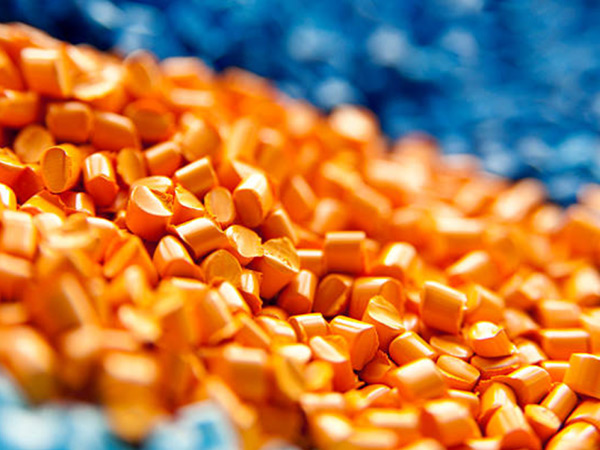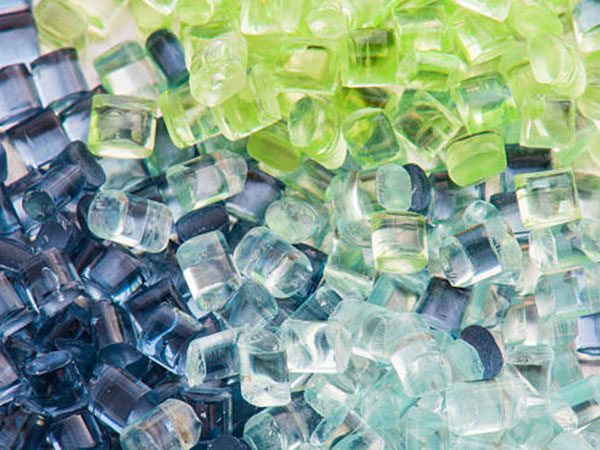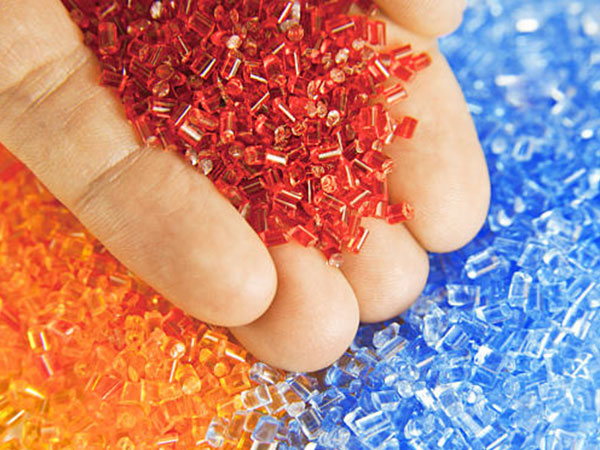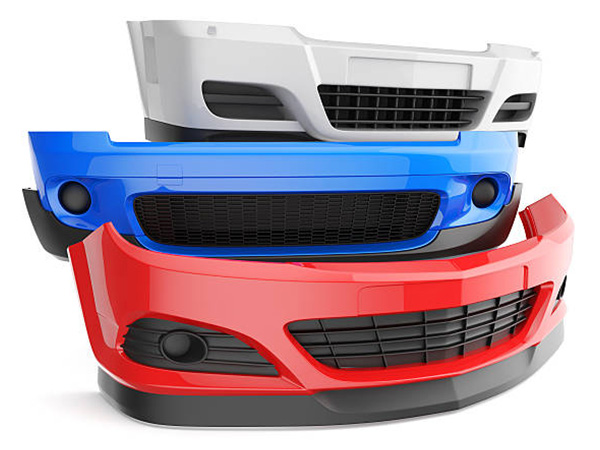Polyethylene is the most used thermoplastic material in the world and is available in various forms from shopping bags to toys, food wraps, water bottles and automobile fuel tanks. Based on molecular structure, there are several types of PE, the most common types being high-density polyethylene (HDPE) and low-density polyethylene (LDPE).
This blog post is a comprehensive guide of HDPE vs LDPE that explores the similarities, differences and applications of these PE variants.
Common Kinds of PE Plastic Material
Polyethylene is divided into various types depending on molecular structure. PE can be categorized into 4 major variants: HDPE, LDPE, Linear Low-Density Polyethylene (LLDPE), and Ultra-High Molecular Weight Polyethylene (UHMWPE).
High-Density Polyethylene (HDPE)
HDPE, as the name implies, is polyethylene with higher density and tensile strength when compared to LDPE. This is due to the nature of the branching structure in its polymer chain. With less branching in its structural composition, HDPE has stronger intermolecular forces and is therefore rigid with great tensile strength.
This inherent property of HDPE makes it durable and resistant to wear, tears and high temperatures. HDPE finds application in heavy-duty bulk packaging, packaging of irregularly shaped or sharp-edged products, and auto parts.

Low-density Polyethylene (LDPE)
LDPE is polyethylene with lower density resulting from its structural composition. This kind of PE material has more side branches which lowers its intermolecular forces, thereby causing it to have lower tensile strength when compared to HDPE.
This property also means that this PE variant is more resilient and elastic than HDPE, and can easily store and release energy during the process of deformation. However, it is unable to withstand high temperatures and tears easily.
LDPE comes in both opaque and translucent forms, perfect for lightweight daily used plastic products.

Similarities of HDPE vs. LDPE
When it comes to plastics, HDPE and LDPE are often compared due to their many similarities. Although there are some key differences between these plastics, you need to understand their shared qualities to help in determining which plastic material is best suited for a specific need.
Light Weight
A notable similarity between high density vs low density polyethylene, is their light weight. Both LDPE and HDPE have relatively low densities when compared to other plastics. Typically, HDPE has a density of about 0.95 g/cm³ while LDPE has a slightly lower density of 0.92 g/cm³.
The low density of these plastic materials makes them ideal for lightweight applications, such as packaging and films, where they help to reduce shipping costs and material waste. Their low weight makes them easier to handle and transport, an advantageous quality in industries where speed and efficiency are crucial.
Good Chemical Resistance
Both plastic materials are highly resistant to a wide range of chemicals, including acids, bases and solvents, making them ideal for applications where they may come in contact with hazardous substances such as in the medical and chemical processing industries.
Good Weather Resistance
Both materials are resistant to UV radiation and are not easily degraded when exposed to sunlight or harsh weather conditions. This makes them perfect for outdoor applications, such as in construction. Their weather resistance help to ensure the longevity of products made from these materials, reducing the need for frequent replacement and saving costs.
This property is also beneficial for products that need to maintain their appearance over time, as they will not fade or discolor easily due to exposure to weather elements.
Good Waterproofness
Another similarity between HDPE and LDPE is their excellent waterproof quality. These two types of plastics have a high moisture resistance and are ideal for use in products that need to be protected from water damage, such as packaging materials, bags, and liners.
This property is due to the low permeability of HDPE and LDPE to water vapor and other liquids.
Differences Between HDPE vs. LDPE
This section answers the question “what is the difference between HDPE and LDPE”, and can help you decide on the best material for your needs.
Different Strength of HDPE and LDPE
One of the key differences between HDPE and LDPE is their tensile strength. HDPE is known to have high strength-to-density ratio, which makes it tougher and more rigid than LDPE.
HDPE has a tensile strength of around 4550 psi, while LDPE has a lower tensile strength of around 1600 psi. This means that HDPE is more deformation-resistant and can withstand heavier loads than LDPE.
However, LDPE is softer, more flexible and has better impact resistance than HDPE, making it suitable for applications where shock absorption is important, such as in packaging and films. The choice of using HDPE vs LDPE will ultimately depend on the specific needs of the application, with considerations for strength, flexibility and impact resistance.

Different High Temperature Tolerance of HDPE and LDPE
Another significant difference between HDPE vs LDPE is their tolerance for high temperatures.
HDPE has a higher melting point of around 130°C (266F) while LDPE has a lower melting point of around 115°C (239F), making HDPE more heat-resistant and able to withstand higher temperatures before it begins to deform. HDPE is ideal for applications where high temperature resistance is important, such as in the automotive and aerospace industries.
On the other hand, LDPE is more suitable for lower temperature applications, such as in packaging, where it can provide flexibility and durability.
Different Material Translucency of HDPE and LDPE
Another significant difference between high density vs low density polyethylene is their material translucency. HDPE is an opaque material, while LDPE is translucent.
This means that LDPE allows more light to pass through, making it a preferable when visibility is important, such as in packaging or medical applications. On the other hand, HDPE is less translucent and more suitable for applications where opacity is important, such as in construction or automotive components.
Different Recycling Classification of HDPE and LDPE
HDPE is generally more recyclable than LDPE, as it is easier to clean and reprocess into new materials. However, LDPE is more commonly recycled through special recycling programs rather than the traditional curbside recycling, due to its lower quality and difficulty in separating from other plastics.
Distinction Between HDPE and LDPE Injection Molding
Injection molding is a widely used process in the plastic manufacturing industry that converts HDPE and LDPE resins into plastic parts of different shapes as determined by the mold. However, there are some distinct differences in the injection molding of HDPE and LDPE.
Applications of HDPE Injection Molding
The high-density polyethylene (HDPE) injection molding process is one that is vey versatile in creating a wide range of plastic products.From automotive components and kitchenware to toys and packaging, HDPE injection molding has become a go-to solution.
Automotive Parts
HDPE has high tensile strength, is durable and resistant to chemicals. These qualities make it an ideal material for use in the automotive industry. Its ability to withstand extreme temperatures and exposure to harsh environments makes it suitable for use in engine compartments or underbody parts.
The automotive industry uses high density polyethylene for a wide range of parts production, such as fuel tanks, bumpers, and instrument panels.

Pipes
HDPE pipes are commonly used in a variety of applications, including water and gas distribution, sewage and drainage systems, and agricultural irrigation. In addition to its lightweight and flexible nature, HDPE has excellent resistance to corrosion, chemicals, and UV radiation, making it a preferred choice for piping applications.
HDPE pipes also have a longer service life and are more cost-effective than the traditional materials like concree or steel.
Kitchen Fittings
HDPE injection molding is commonly used in the production of kitchen fittings, such as cutting boards, food storage containers, and kitchen utensils. As per its desirable qualities, HDPE is resistant to moisture, chemicals and bacteria. Coupled with its ease of cleaning, HDPE makes for an ideal material for food-related applications.
HDPE products are also lightweight, durable, and affordable, making them a popular choice for both residential and commercial kitchens. HDPE’s recycling code of 2 also means that it is safe for storing food, which is what makes it the best food-safe material.
Toys
HDPE is a popular material for the production of toys due to its safety, durability, and versatility. HDPE toys are lightweight and resistant to impacts, making them suitable for children’s playtime.
HDPE also has low toxicity and does not contain harmful chemicals, making it safe for children to play with. In addition to being safe, HDPE can be easily molded into a variety of shapes and sizes, allowing for endless possibilities in toy design and production.

Applications of LDPE Injection Molding
LDPE injection molding is commonly used for creating flexible packaging, plastic wraps, grocery bags, and other products. Its versatility and affordability make it a popular choice for businesses across various industries looking for reliable production methods.
Flexible Packages
LDPE injection molding is commonly used in the production of flexible packages, such as bags, pouches, and films. LDPE’s flexibility, toughness, and moisture resistance make it an ideal material for packaging applications.
As the LDPE material is also transparent, allowing for easy product visibility, and can be printed on, allowing for branding and labelling options.
Plastic Wraps
LDPE’s clinginess, flexibility, and water resistance make it an ideal material for plastic wrap applications. LDPE plastic wraps can be easily stretched and molded to fit various shapes and sizes of food products, providing a tight seal that helps to keep food fresh and reduce spoilage.
Reliable HDPE and LDPE Injection Molding Services from FOW Mould
FOW Mould is a leading plastic injection molding company located in Taizhou, Zhejiang. The China-based plastic manufacturer is a major provider of reliable and cost-effective HDPE and LDPE injection molding with over 15 years of experience in the industry.

FOW Mould offers a range of HDPE and LDPE injection molding services, including plastic injection molding, rapid prototyping, and tooling. We specialise in the production of high-quality HDPE and LDPE plastic products for various industries, including automotive, construction, home appliances, packaging, and more.
Conclusion
Both HDPE and LDPE have their unique properties, making them suitable for various applications.
Working with a reputable injection molding company is essential when choosing between HDPE and LDPE for your applications. With years of experience and a commitment to quality, FOW Mould is the right company to meet all your unique needs. Contact us today to get a quote.
